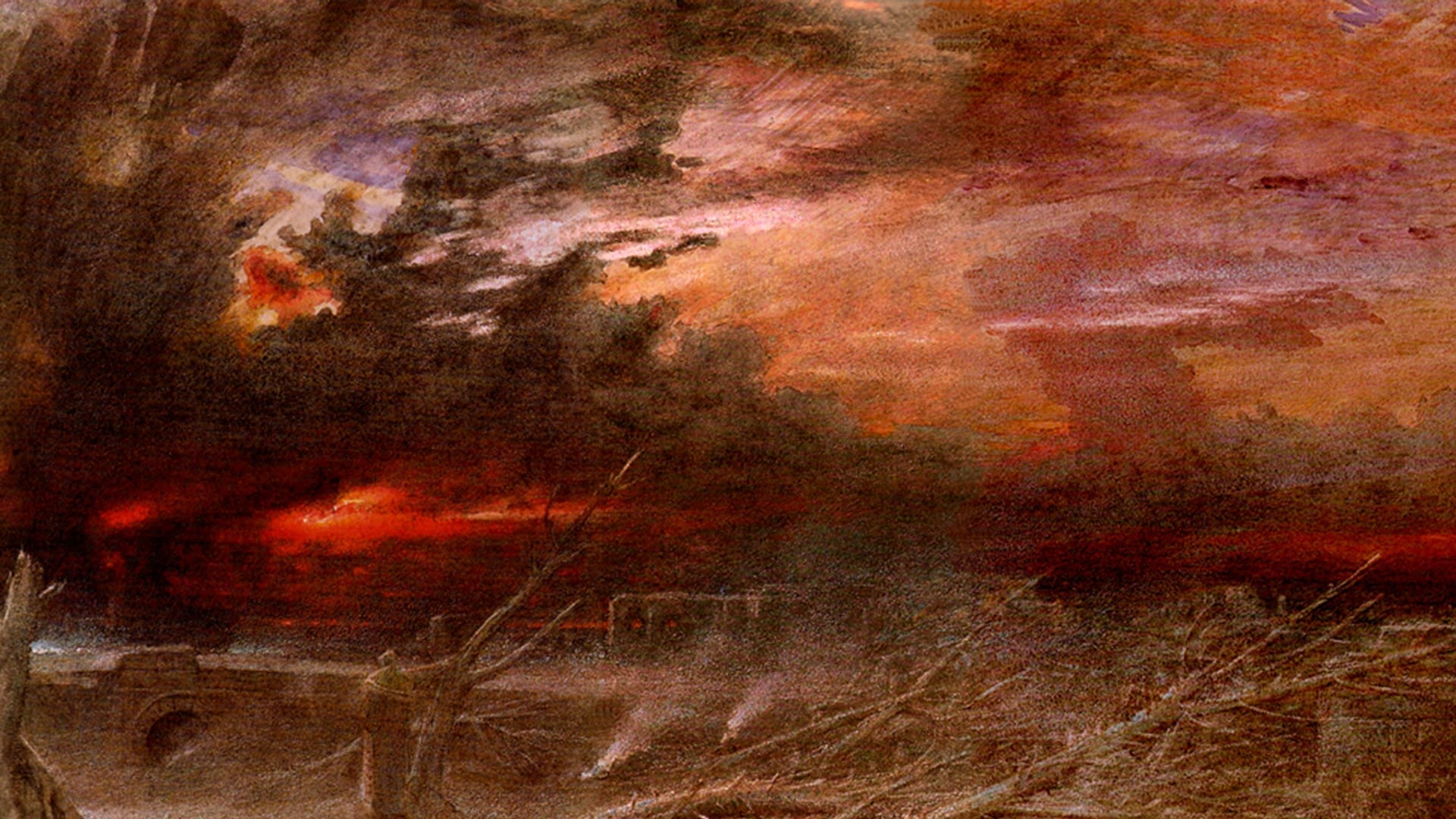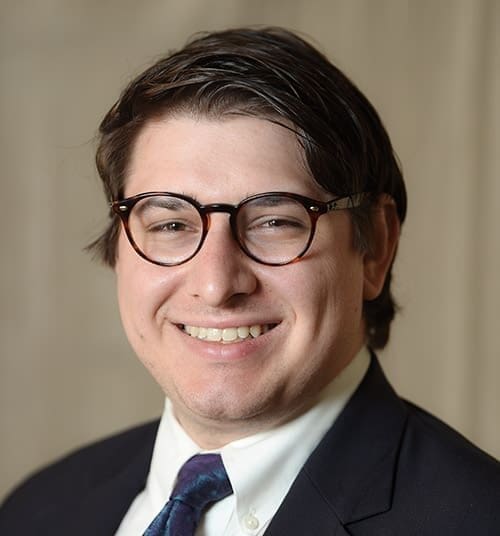W
When director Christopher Nolan ended Oppenheimer with a vision of the earth devoured by nuclear fire, no critic accused him of being melodramatic. His artistic choice and the acclaim it received are emblematic of the fact that our predominant feeling about the future is anxiety.
Historically, optimism has been generational, with the youth hopeful for a brighter tomorrow and their elders more pessimistic about decline. This relationship has reversed. In The Anxious Generation, Jonathan Haidt provides dire statistics. Even before the pandemic, anxiety for American adults younger than fifty was spiralling, up 53 percent since 2010 for those aged thirty-five to forty-nine, 103 percent for those aged twenty-six to thirty-four, and a whopping 139 percent for those aged eighteen to twenty-five.
And, of course, there is much to be anxious about. In America, both Republicans and Democrats increasingly feel that the country is at a breaking point, that the other party is engaged in unprecedented violations of the Constitutional order, from which the country might not recover. Young people express great uncertainty about how to prepare for the future, how to envision careers in an economy that relies more and more on gig work, short contracts, and lateral moves and in which technological disruption looms.
When we think about the future, our anxiety emanates from concerns even bigger than political or economic chaos. A looming climate catastrophe generates greater apocalyptic fear and escalating protest actions. At the same time, there’s a growing realization that the collapse in fertility will mean an aging population and an inability to respond to the challenges of the future. Nolan has intimated in interviews that he sees a parallel between the Manhattan Project depicted in Oppenheimer and the existential risks posed by increasingly sophisticated and autonomous forms of artificial intelligence (AI) research.
Our anxiety about the future is paralyzing. And yet it is a strange kind of paralysis—the paralysis of acceleration, like an astronaut planted deep into her seat by the force of liftoff. Not an irrational despair but an all-too-rational projection of the uncertain future of accelerating technological change and its consequences. Stop, or at least slow down, is the refrain, whether the issue is climate change, deforestation, genetic modification, or another emerging threat. Tens of thousands of people, including world-leading AI scientists and entrepreneurs, have signed an open letter calling for a pause on AI research for safety reasons.
How far removed we are from the techno-optimism of the nineteenth and early twentieth centuries. Scientific and technological triumphs delivered incredible advances in knowledge, living standards, and medicine. These appeared set to continue into a future characterized by rapid travel, accessible leisure, and widespread comfort. Even after World War I, the advertisements for the 1933 Chicago World’s Fair could herald without irony a “Century of Progress.”
The forces undermining a belief that the world is hastening toward progress are not hard to identify. The Second World War proved both that humankind now had the capability to destroy itself technologically and that technological progress had in no sense been matched, as Enlightenment thinkers like Kant and Hegel had hoped, by moral progress. As Theodor Adorno put it after the war, “No universal history leads from savagery to humanitarianism, but there is one leading from the slingshot to the megaton bomb.”
The atom bomb was the first, and not the last, of a new kind of doomsday toward which humankind seemed to be accelerating: the population bomb, a DDT-induced “Silent Spring,” peak oil and energy system collapse, the destruction of the ozone layer, Chernobyl, Y2K, a man-made genetically modified pandemic, runaway nanotechnology, to name a few. What each has in common is the concern that humanity is no longer in control of its own technological destiny, that we have built the tools to destroy ourselves. Our paralyzing anxiety toward the future comes from the feeling that our own actions are leading us to catastrophe.
Apocalypse Lab Leak
Where does this story come from? Not the specific fears, but the underlying narrative? Adorno clues us in, telling us that this is a question of what kinds of stories about the world make sense. For a century, Western thinkers had acclaimed “progress”—scientific, technological, ethical, institutional, economic, cultural, and more. But speaking of “progress” or “historical development” (or “the right side of history”) suggests that history has a definitive direction, a direction toward an end state of some kind. Anxiety about “progress” does not really abandon this schema—either it reflects a concern that history is temporarily moving in the “wrong” direction, or it puts a negative sign in front of progress, telling the same story but leading not up toward utopia but down toward dystopia or catastrophe.
Most civilizations have believed that history is cyclical and that societies rise and fall in epochs. But under the sway first of Christianity and then of the Scientific Revolution, the West adopted a linear view of history, which a range of thinkers (including Kant, Hegel, Herder, and Marx) attempted to characterize. The attempts to produce a single narrative of world history leading in a decisive direction belong to a genre called “universal history” or “philosophy of history.” Each attempt posits some motive force driving the events of our world, such as historical materialism, the evolution of consciousness, or scientific development. While not usually thought of this way, books like Steven Pinker’s The Better Angels of Our Nature, Yuval Noah Harari’s Sapiens, Francis Fukuyama’s The End of History, or Ray Kurzweil’s The Singularity Is Near stand as modern inheritors of this tradition.
The atomic bomb created a crisis of faith in stories of universal progress: even Soviet Marxists revised their historical-materialist dogmas to account for the “peaceful coexistence” demanded by the bomb. The shock was not only the power of the weapon but also its origin in the placid mathematics of particle physics, the epitome of the noblest aspirations of human reason. The possibility that humanity was accelerating not toward enlightenment but toward catastrophe re-entered Western thinking. Something was going terribly wrong with history. Since then, the anxiety and tension between a progressive and a catastrophic philosophy of history has grown to unbearable and unresolvable extremes.
But what if we are telling the wrong stories about the future?
Writing amid the anxieties of the dawning nuclear age, Catholic theologian Josef Pieper developed a counterintuitive thesis: that the escalating anxiety about the future owed not only to self-evidently threatening technological developments but also to an extremely powerful narrative about the future that had escaped its proper context, a kind of theological lab leak. That narrative, he argues in his little-known 1950 book The End of Time: A Meditation on the Philosophy of History, is the Christian story of the apocalypse.
The visions of a utopian or dystopian future circulating in society today have their origins in the ideas and longings of the Christian story.
With compelling detail, he shows how all the essential features of Western philosophies of history are secularized elements of the Christian narrative of the end of the world: apocalypse, paradise, heaven, Armageddon, judgment day, doomsday, antichrist, kingdom of God, parousia (or second coming), katechon, and more. The terms themselves are of course in wide circulation, but even where they are not used, it proves trivially easy to demonstrate that the visions of a utopian or dystopian future circulating in society today have their origins in the ideas and longings of the Christian story.
For instance, what is the vision of the AI Singularity except a secularized parousia, in which a godlike omnipotent, omniscient, benevolent AI becomes “God with us” and creates heaven on earth, in which all of humanity is joined in a kind of merged consciousness and humans achieve immortality? Fantastic as it might sound, these were very much the aspirations of many AI researchers over the past several decades. When asked whether God exists, Ray Kurzweil said, “Not yet.”
And when many in the AI community came to fear they could not control a godlike AI or ensure it was benevolent, fears of an AI “apocalypse” or “doomsday” escalated. In the Terminator series, the Skynet AI attempts to wipe out humanity on “judgment day.” Meanwhile, techno-optimists look at the measures that leading AI safety thinkers propose to deal with existential risk—such as global governance over technology development, empowering an “AI Leviathan,” and Sam Altman’s retina-scanning cryptocurrency Worldcoin—and sound the alarm that, in the words of Peter Thiel, “we should be at least as scared of the Antichrist as of Armageddon.”
But, outside their proper context, these ideas express anxiety about what the future holds. The secularized apocalypse hangs like the sword of Damocles over history. Under its sway, humanity finds itself drawn into an ever more schizophrenic and binary conception of the future as simultaneously catastrophic and eucatastrophic—visions of apocalypse and utopia swirling together. Paralyzed in the face of this uncertainty, our goal is to delay or contain the apocalypse. An agenda of “peace and safety” sounds better by the day.
Pieper shows that removing these Christian ideas from their proper context radically changes their meaning. The Christian teaching is that the end of history holds both catastrophe and salvation. All those efforts to delay or contain apocalypse are leading toward stagnation and authoritarianism (“the dominion of Antichrist”). At the same time, whatever their human cost, they will ultimately fail violently. But what is “revealed” by the apocalypse (the original meaning of the word) is not catastrophe but eucatastrophe—the kingdom of God, the setting right of the world, the redemption of humanity.
For Pieper, this teaching leads to a paradox. Secular philosophies of history appear to give us significant agency over our fate: the catastrophic end of history is not written in stone; it is within humanity’s control. And yet this uncertainty produces huge anxiety. Christians, to the extent that they believe this prophecy and are thus certain of catastrophe within history (and indeed of their own special persecution in the process), have drawn from it “a hope that renders the believer able and willing to act here and now, within history, indeed even to see in the midst of the catastrophe itself a possibility of meaningful action within history.”
The Hope of Chartres
The solution to a society increasingly pessimistic and anxious toward its future is not optimism, the piling up of facts on the bright side. It is hope. Hope is not just an emotion—the belief or feeling that things will turn out well. It is a virtue we must practice—the willful affirmation of the goodness of the world, even when (or perhaps especially when) obvious disaster looms. Ivan Illich explains:
Hope, in its strong sense, means trusting faith in the goodness of nature, while expectation, as I will use it here, means reliance on results which are planned and controlled by man. Hope centers desire on a person from whom we await a gift. Expectation looks forward to satisfaction from a predictable process which will produce what we have the right to claim. The Promethean ethos has now eclipsed hope.
Survival of the human race depends on its rediscovery as a social force.
In the Christian tradition, hope is a theological virtue, one that finds its proper object in God. Especially as technological power increases, the belief that “all shall be well, and all shall be well, and all manner of thing shall be well” can come only from a conviction that God, and not man, is the Author of history.
The thing that characterizes hope, for St. Thomas Aquinas, is ardor: “a movement or stretching forth of the appetite towards an arduous good.” To practice the virtue of hope is to take action that depends on the responsiveness of the world toward the good, even in the face of evidence to the contrary.
These two attitudes—to attempt to save the world through zealotry or to eat, drink, and be merry in the face of an uncertain tomorrow—are both, in the Gospels, the templates of despair.
In the book of Matthew, Jesus gives an apocalyptic teaching immediately before the beginning of his passion. He prophesies the destruction of the temple, a world-ending tribulation, and his triumphant return. At the end of the teaching, he gives two parables to illustrate what this means for his followers, the final parables of his ministry. They both demonstrate hopeful action (what Joseph Ratzinger, later Pope Benedict XVI, calls “watchfulness”) as the proper Christian attitude toward the future. In both parables, what distinguishes the faithful and unfaithful is their willingness to take action that anticipates the imminent return of the bridegroom (in the parable of the ten virgins) and of the lord (in the parable of the talents). What motivates the unfaithful in both is paralysis in the face of uncertainty. The foolish maidens and the faithless servant aren’t sure when the bridegroom or lord will return, and their lack of belief allows them to put off the work needed to be prepared. (“My lord delayeth his coming,” the evil servant says to himself in an earlier passage.) In allowing their firm belief in the lord’s return to spur them to preparatory action, the faithful practice hope.
On America’s hurricane coasts, the most damaging and dangerous situations are those in which meteorological uncertainty leads people to fail to get ready for landfall. The more certain you are of the weather predictions, the more willing you are to take extreme action to prepare.
As technology accelerates, secular stories about the end of the world—whether utopian Singularity or dystopian disaster—have a paralyzing effect. If humanity’s fate depends on our actions, then we can’t help but despair, as radical action always falls short of the problem. It’s not a coincidence that a primary tactic of climate change extremists is to literally glue themselves in place. Alternatively, if the future is uncertain, it is not clear how it addresses itself to me, to what extent I am responsible for the future. These two attitudes—to attempt to save the world through zealotry or to eat, drink, and be merry in the face of an uncertain tomorrow—are both, in the Gospels, the templates of despair.
Besides the temptation toward paralysis, a lack of faith in God’s providence can tempt us in the other direction, toward attempting to ensure, through our own efforts, the “right” outcome for history. This, too, is a form of despair, of unbelief that the world is ordered to the good. You see this not only in forms of revolutionary terrorism (historian Yuri Slezkine says the early Bolsheviks viewed the Red Terror as a secularized “day of judgment” taken into their own hands) but also in forms of Christian nationalism that seek to identify where we are within the “end times” and perhaps to prod things along, or that peremptorily finger present-day political figures in the biblical Apocalypse narrative.
The end is coming. There will be a catastrophe. But providence still ordains that all will be well.
Christians must resist attempts to artificially bring about the parousia (what Eric Voegelin describes as immanentizing the eschaton) and attempts to use extraordinary means to render the future “safe.” For many, when the end of history is at stake, any means are justified. Ratzinger says that “the setting asunder of eschatology and politics is one of the fundamental tasks of Christian theology,” because “where eschatology and politics are made to coincide, morality decrees its own dissolution.” Whether in the form of degrowth socialism, extreme forms of Christian nationalism, or AI safetyism, Christians need to resist apocalypse-infected politics with an authentic eschatological hope.
For Christians, the drawing near of the apocalypse should serve (as it has throughout history) not to paralyze us or make us anxious but to spur us to bold and hopeful action. The end is coming. There will be a catastrophe. But providence still ordains that all will be well. In the Greek myth, when all the evils have fled Pandora’s box, what remains inside is hope.
Hope in the face of apocalypse has been, for Christians, “an incomparable power of building and founding.” Pieper notes that the best response of thirteenth-century Christians to Joachim of Fiore’s millenarian prophecies was not panic but a sober conviction toward faithful action. In 1260, the year that Abbot Joachim had predicted the end of the age, St. Louis of France oversaw the consecration of Chartres Cathedral. You would never guess from the serene repose of Aquinas’s Summa Theologica that it was composed amid the most intense apocalyptic fervour Christianity had seen since the first century. In the face of the apocalypse, Pieper says, we respond hopefully by “creating order in the world by prophylactic and curative action.”
In hope, Christians believe that we do not have the power to end the world. Nor do we have the power to bring about heaven on earth. Foreswearing fears and dreams in both directions, we seek to undertake what we know to be good today, and to resist what is evil, taking action even when the cause appears to be lost, even when catastrophe looms. We have the courage to endure suffering and hardship because we believe our future reward depends not on the outcomes we can ensure but on the work God has already accomplished.
We don’t fear the apocalypse. We pray for it: “Thy kingdom come, thy will be done, on earth, as it is in heaven.”






